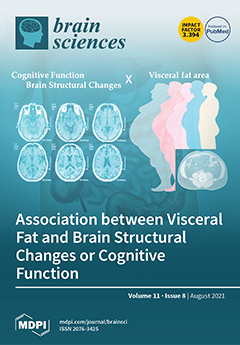The aim of this study was to evaluate the efficacy of aquatic exercise (AE) and land-based exercise (LE) on cardiorespiratory fitness, motor function, balance, and functional independence in stroke patients. Design: Through searching PubMed, Embase, Cochrane Library, Web of Science, CNKI, VIP and
[...] Read more.
The aim of this study was to evaluate the efficacy of aquatic exercise (AE) and land-based exercise (LE) on cardiorespiratory fitness, motor function, balance, and functional independence in stroke patients. Design: Through searching PubMed, Embase, Cochrane Library, Web of Science, CNKI, VIP and Wanfang Database, only randomized controlled trials (RCTs) were collected to study the effects of AE and LE on cardiorespiratory fitness, motor function, balance, and functional independence in patients with stroke. The included studies were evaluated for methodological quality by the Cochrane bias risk assessment tool, and statistical analysis was carried out by the Review Manage 5.3 and Stata 15.1 software. Results: The RCTs were collected between the earliest available date and April 2021. Eleven RCTs were included, including five studies with low risk and six studies with moderate risk. The total sample size used in the study was 369, which included 187 patients undertaking AE and 182 patients undertaking LE. The results of the meta-analysis showed that AE can significantly improve patients’ Berg Balance Scale (BBS) (MD = 5.19, 95% CI: 2.66 to 7.71,
p < 0.0001), peak oxygen uptake (VO
2peak) (MD = 3.49, 95% CI: 0.17 to 6.8,
p = 0.04), Fugl–Meyer Assessment (FMA) (MD = 3.84, 95% CI: 1.64 to 6.04,
p = 0.0006), and Functional Independence Measure (FIM) (MD = 6.1, 95% CI: 4.05 to 8.15,
p < 0.00001). However, there was no statistically significant difference between the two exercise modes in the Timed Up and Go Test (TUGT) (MD = −2.52, 95% CI: −5.95 to 0.91,
p = 0.15) or the Functional Ambulation Category scale (FAC) (MD = 0.28, 95% CI: −0.21 to 0.76,
p = 0.26). Conclusion: Based on the improvement in the Berg Balance Scale, peak oxygen uptake, Fugl–Meyer Assessment, and Functional Independence Measure, we can state that aquatic exercise offers better advantages than land-based exercise for patients’ balance, motor function, cardiorespiratory fitness, and functional independence.
Full article






